AA&U for Architecture, Art and Urbanism
Socrates Stratis (CY)
Maria Loizidou (CY)
AA&U for Architecture, Art and Urbanism
Maria Loizidou (CY), visual artist 9 Maria Sygletiki street, 1011 Nicosia – Cyprus
+357 22665243 – info@aaplusu.com
aaplusu.com – socratesstratis.com – marialoizidou.com
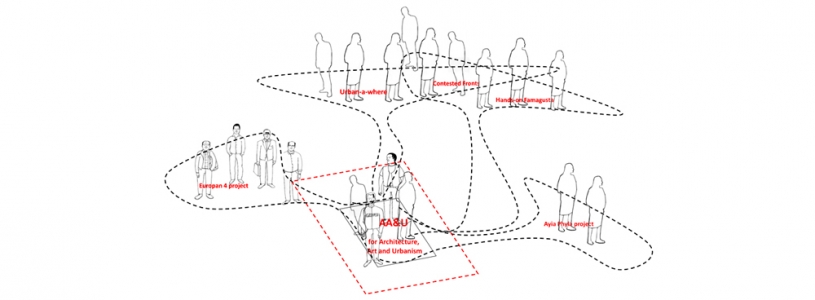 AA&U for Architecture, Art & Urbanism
AA&U for Architecture, Art & Urbanism
When did you win Europan? On which sites and in which countries? How was the team formed by then? Please describe the main ideas of your projects?
We won Europan 4 in 1996 in Heraklion, Crete, Greece. We come from Cyprus. The team consisted of four members, two of them architects-planners (Socrates Stratis, Kyriakos Koundouros), one architect-graphic designer (Akis Ioannides) and one visual artist (Maria Loizidou). The main idea of the project was to propose scenarios for new urban relations between Heraklion's old city waterfront and the sea. Up to that period the city had turned its back to the sea. We identified a wide area between the actual built edge and the water which we had called the “space between the city and the sea”. We developed scenarios of porous edges that could generate various relations between the city and the sea, both vertical and parallel to the water. We had acknowledged the uncertainty of working on an urban scale, in a city we did not know well by giving both a strong strategic character to the proposal and a specific piece-meal physical outcome. One of the main areas of the competition site was a former vegetable market, for which we were refurbishing with new public uses.
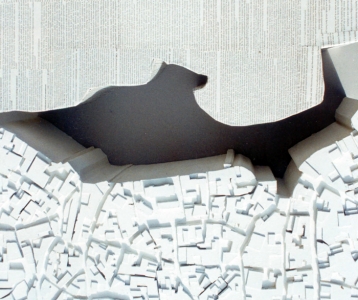 Competition model
Competition model
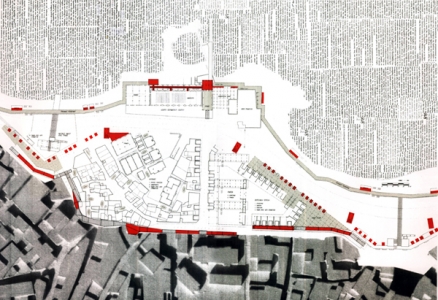 Competition site plan
Competition site plan
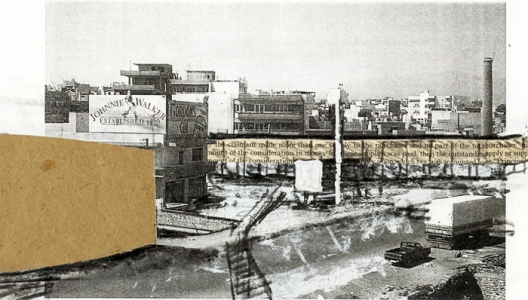 Competition project section elevation
Competition project section elevation
 Section
Section
Did your project have any follow-up? If yes, which one and how? Did this step have a learning effect for you as far as the process is concerned? If yes, which one? If not, why did the project not go further?
In 2000, when we were called to start the collaboration with the municipality, the former municipal market building had already being demolished. We worked a lot to clarify to the local actors our strategies behind the scenarios for activating the “space between the city and the sea”. That allowed us to reestablish a complex programming of the site, introducing both public spaces and public program. In addition, our work between 2000 and 2002 when we finally signed the first contract was a translation of the initial competition scenarios into a brief for a masterplan for the competition site. It was really helpful since we managed to become the city’s advisors for setting priorities for the area. That was extremely useful for us for the period after signing the contract.
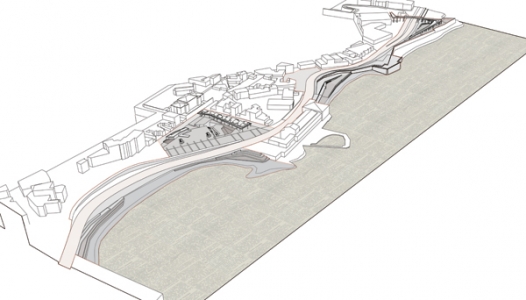 General view of the project
General view of the project
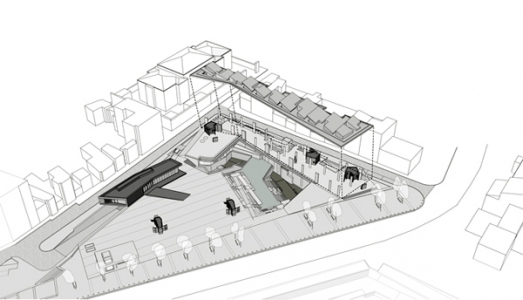 Rehabilitation centre
Rehabilitation centre
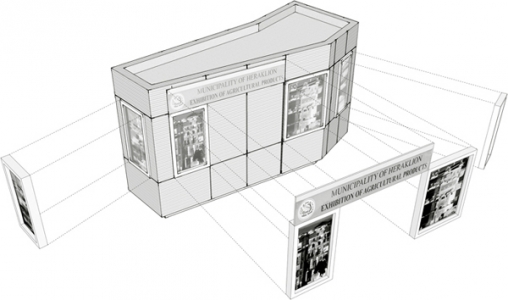 Readjusting the XS kiosk
Readjusting the XS kiosk
In fact, the project had a very long life time with inactive periods. Thanks to its overall strategic approach, together with a piece-meal method, we managed to have the implemented parts of each stage creating the larger picture of the waterfront. Our team was inscribed in a sort of “urban judo” logic by investing a lot of time in understanding the actual dynamics of actors behind the project’s challenges. We needed to keep together fragments of the project site that were funded by different public bodies with not so much communication between them. The success of the initial stage, as well as the patience and persistence during a very long study period, enabled a sort of a snowball effect. We kept getting additional commissions and the city kept informing its urban development plans about the overall old city waterfront with the ideas of the Europan project. The mayor took advantage of the well-prepared studies of each stage to claim for European funding and gradually implement a quite considerable part of the project. We managed to turn the institutional difficulties to implement such urban design projects in Greece into our advantage, since we could have a role on traffic issues, coastal engineering, supporting the city to formulate the right public program for the project. Unfortunately, an extra commission which was about a pedestrian ramped bridge between the waterfront road and the city’s bastions has been cancelled. In addition, due to the unprecedented financial crisis in Greece, the implementation of the final stages of some of the projects we prepared along the waterfront, has been on hold. Actually, the bad financial condition of the municipality reflects on the implemented parts of the projects that get insufficient care. On the other hand, I am happy to say that some parts of the project, such as a large urban ramp connecting the city with the sea six meters below, have been fostered by the inhabitants’ initiatives and have been integrated in the everyday public life of the waterfront.
Surprisingly, a few months ago (Spring 2017) we were invited to proceed with further studies of an additional urban ramp located to an adjacent bay.
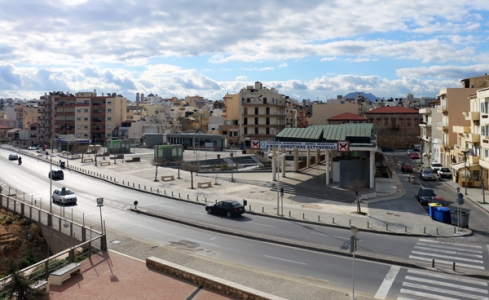 Rehabilitation centre & the public square
Rehabilitation centre & the public square
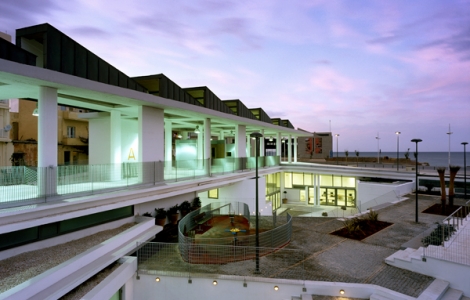 Rehabilitation centre (© Y. Yerolymbos)
Rehabilitation centre (© Y. Yerolymbos)
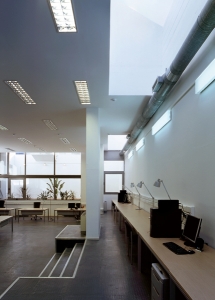 Inside the rehabilitation centre (© Y. Yerolymbos)
Inside the rehabilitation centre (© Y. Yerolymbos)
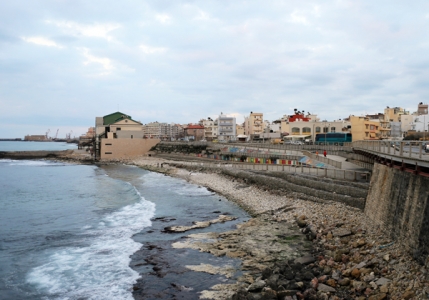 The new urban ramp
The new urban ramp
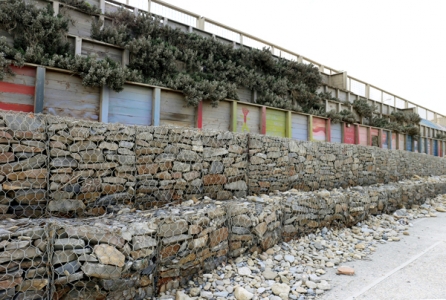 Detail of the urban ramp
Detail of the urban ramp
Did winning Europan launch the creation of a professional structure and if so, which structure and with whom?
The process of implementation of our Europan project goes hand in hand with the life of our office, AA&U for Architecture, Art and Urbanism in Nicosia, as well as with my academic career. In fact, one of the reasons we succeeded implementing the Europan 4 project was a reflective practice I adopted enabling myself to appropriately adjust to the actor’s dynamics behind each implementation stage. The first implementation stage was done by two members of the initial team (S. Stratis, K. Koundouros). The later stages were done by myself (S. Stratis) and new collaborators who joined AA&U. For quite a long time, the Europan implementation was the main income of our office in Nicosia. The structure itself of AA&U, which combines architecture, urbanism and support structures, emerged from our practice for implementing the Europan 4 project.
Did winning Europan have a label effect for you after the competition (acknowledgement by clients, call to participate to competitions or direct order)? If yes, how? Do you feel being part of a “Europan generation” and if so, why?
I consider myself as part of the Europan Generation due to my multifaceted engagement with Europan for the last 21 years. Being based in Cyprus, but at the same time being exposed to the rich Europan urban culture encouraged me to inscribe my work in a new figure of practice, which I call architecture as urbanism. It has to do with designing architectural agencies for urban transformations going beyond binaries, such as centre vs periphery also challenging nested scales in which urban design usually operates.
The conflictual Cypriot context has enabled AA&U to broaden such new figure of practice by making explicit the political dimension of architecture and urban design. Winning Europan did not have a label effect on our office, due to the fact that neither Europan, nor urban design culture is established in Greece or in Cyprus. We had no direct order or acknowledgment by clients. However, Europan had a substantial effect on us both professionally and academically. Our experience in implementing the Europan 4 project in Iraklion, helped our office in winning architectural competitions in Cyprus open to all Europeans; besides it allowed us to have the minimum experience requirements in winning closed competitions such as that for the post-conflict reconstruction urban plan for Famagusta, a Cypriot city actually fenced off by the Turkish army. The “Hands-on Famagusta” project, a multiagency architectural project –www.handsonfamagusta.org– is also relevant.
With regards to my academic career, thanks to the inactiveness of the Europan 4 winning project, (1996-2000), I managed to get my DEA on Urbanism in France with a thesis based on our Europan 4 project as a case study for a reflective practice. Besides, my doctorate research that followed focused on the project methodology through its local/global dynamics. I used French and Greek Europan 5 winning projects as case studies. My involvement with Europan Europe through the Scientific Council and the Technical Committee has created an additional layer of engagement with Europan.
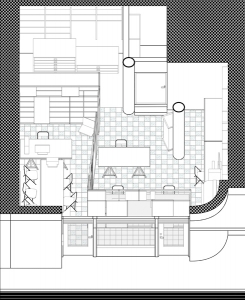 AA&U office plan
AA&U office plan
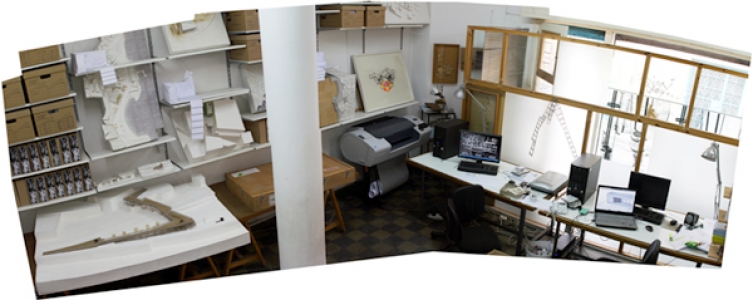 AA&U office
AA&U office
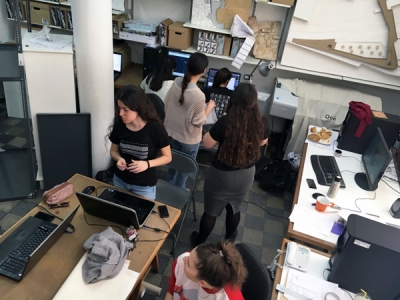 Working sessions
Working sessions
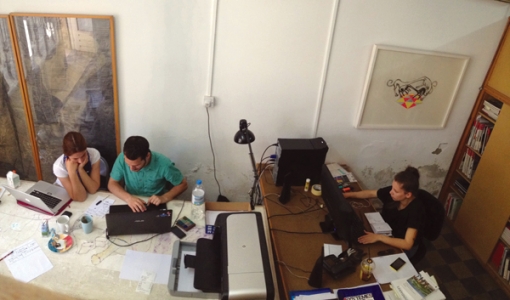 Working sessions
Working sessions
Did the issue developed in your winning projects act as a baseline for the later development of your work? If yes, how? And more specifically in which projects –implemented or not?
My involvement with Europan has been quite complex and rich. Such an involvement encouraged me to formulate AA&U as a quite heterogeneous practice. Dynamic relations across physical, programmatic and actors contexts had become the generative force of most of the work. In addition, my collaboration with a visual artist, Maria Loizidou who was part of the initial winning team, as well as my exposure to urban issues through my doctorate research opened up possibilities for projects across disciplines.
Architectures of urban porosity
How limits are transformed into thresholds allowing multiple exchange across urban enclaves? Tactics and strategies for disenclaving become a priority, be it on a very small or on a territorial scale.
The “Open City” honourable mention proposal for the competition for the connection of the Archeological Sites in Paphos (CY), in 2014 builds on the actual ecologies of the city of Paphos by redefining the edges between public and private built and vegetated areas allowing urban networks to infiltrate the archaeological site. The third prize winning proposal for the creation of a national park at Liopetri (2011), transforms a landscape of fragments into an archipelago of interrelated islands of all sorts of programs. And lastly, issues of disenclavement become quite explicit through the “Hands-on Famagusta” political project (2014), developed into “Contested Fronts: commoning practices for conflict transformation”, my curatorial project for the Cyprus pavilion of the 15th Venice Biennale of Architecture.
Acupuncture as a method to approach the urban through architecture
Notions such as the incremental or piece-meal interventions are major characteristics of the work of AA&U. In our winning project for the Redevelopment of the historical centre of Agia Phyla, Limassol (CY), 2011-20, piece meal interventions make issues of urban complexity become crucial, since the continuous reading of the existing situation becomes part of AA&U’s practice. Continuous readjustments of tactics by tackling controversial issues and re-allying with various urban actors become major part of the design project – and a sort of “urban judo” emerges.
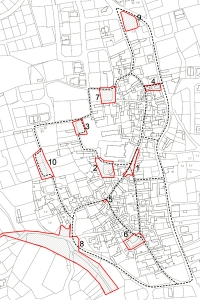 Designing a network of micro public spaces
Designing a network of micro public spaces
Support structure notion of architecture
It is about spatial agency for social assistance and criticism. AA&U’s design processes are engaged with the political dimension of urban transformations. The outputs become critical statements even if they do not have the power for considerable change, they point towards new alternatives. It is through the "Support Structures" that the visual art is introduced into AA&U’s work. Such approach is enriched by curatorial work as well as participation in international exhibitions and competitions. The most recent aspect of this approach was the Cyprus pavilion that I curated for the 15th Biennale of Architecture in Venice, developing the idea of "Contested Fronts" and based on the "Hands-On Famagusta" project.
Another example is our second prize winning project “Pending Memorial” for a Memorial for the victims of a terrible explosion at Mari (CY), in 2013 , turns a typical memorial design competition into a creative critique of the State that failed to protect its citizens from the deadly explosion of stored explosives in a military camp that also destroyed the newly built and only central electric power of the island. The “Pending Memorial” is a network and mobile infrastructure for one week commemorating process that takes place in front of public buildings in Cypriot cities as well as it takes care of the destroyed landscape.